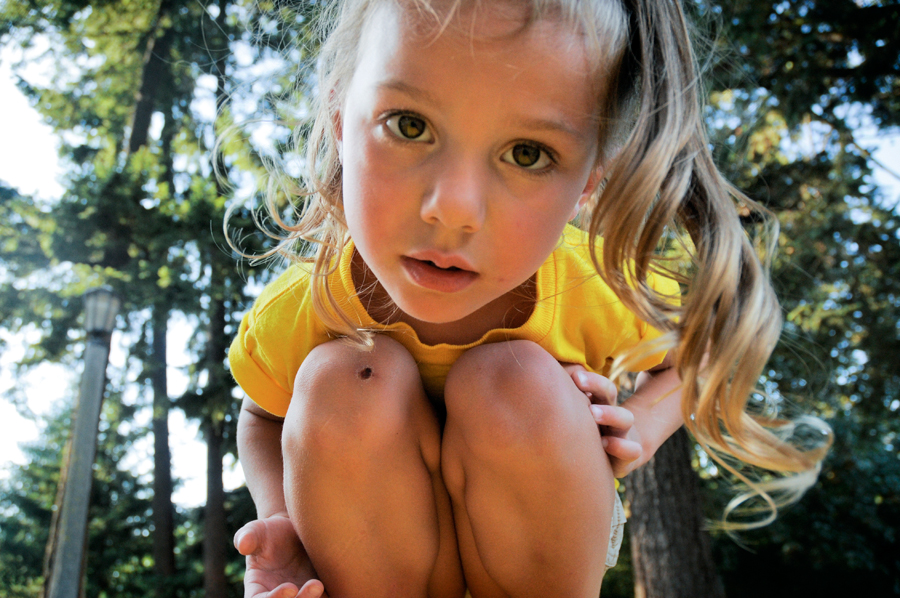
Margaret Whitfield, co-author of the new Kindergarten series, Show and Tell, offers some practical tips on making the most of CLIL in the Kindergarten classroom.
CLIL (Content and Language Integrated Learning) has been a buzzword in English language education for a number of years now, and is an established part of many programs. Its supporters claim that combining subject learning (e.g. science or music) with language learning can increase student motivation and improve understanding. However, they’re often talking about older children who have some existing knowledge of English and the subject – can we bring CLIL into a Kindergarten classroom with equal benefits?
Well, the good news is that we don’t have to. CLIL is already there! In Kindergarten, children are being exposed to new concepts and content all the time, from number work to songs to mixing colored paints and beyond. In addition, young children are innately curious about the world around them and love to explore new things. So instead of starting from scratch, let’s look at the ways in which everyday Kindergarten activities can be exploited to make the most of their subject-learning and language-learning potential.
Let’s pretend
Pretending is a fundamental part of children’s play at this age. Whether they use costumes or just their imaginations, children are exploring the adult world they see around them. You can use this in a number of ways to explore different themes:
Social science
Focus on families, learning the names of different family members and talking about what they do, and providing opportunities for children to role-play families. Extend this to science, talking about and role-playing animal families.
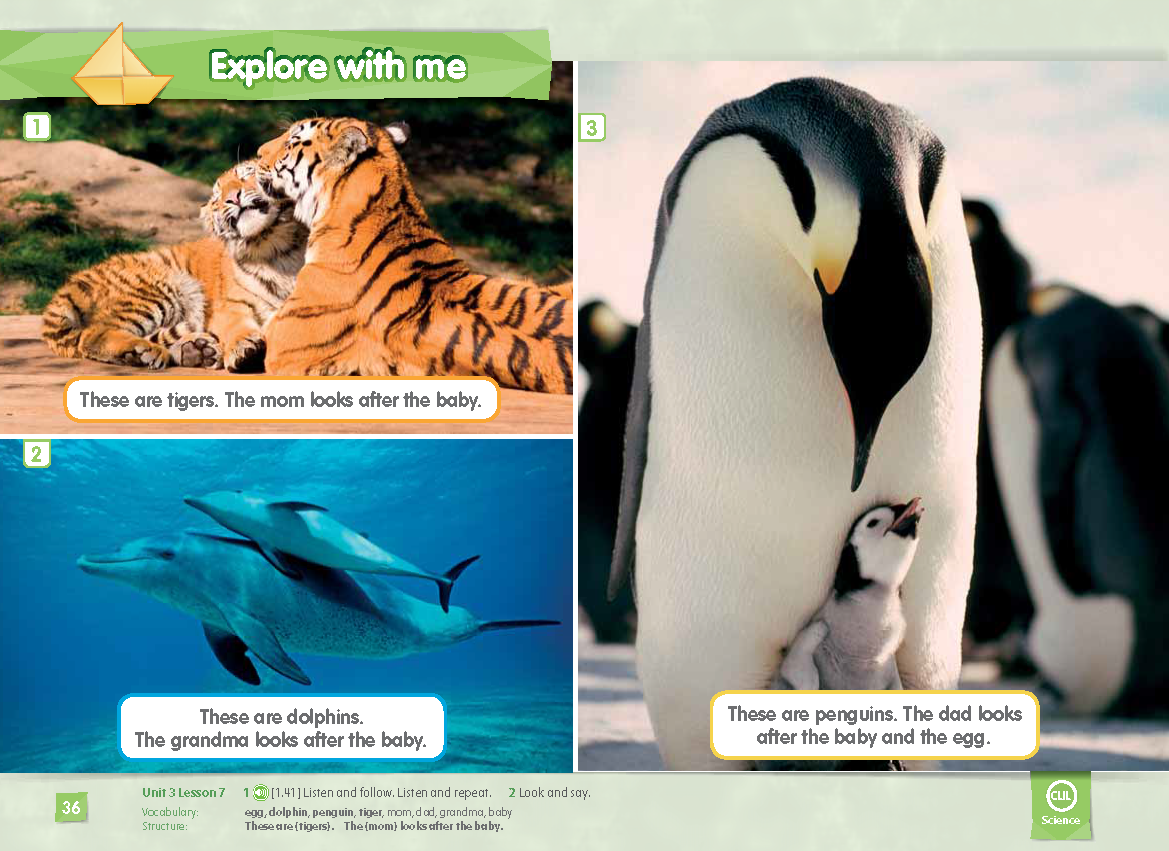
Language arts
Focus on fictional characters that the children are interested in – superheroes, princes and princesses, pirates, and so on. This can be a great way into describing people as well – look at storybooks together and talk about what the characters are like and how they feel at different points. Then the children can act out the characters, being happy, sad, fierce or brave!
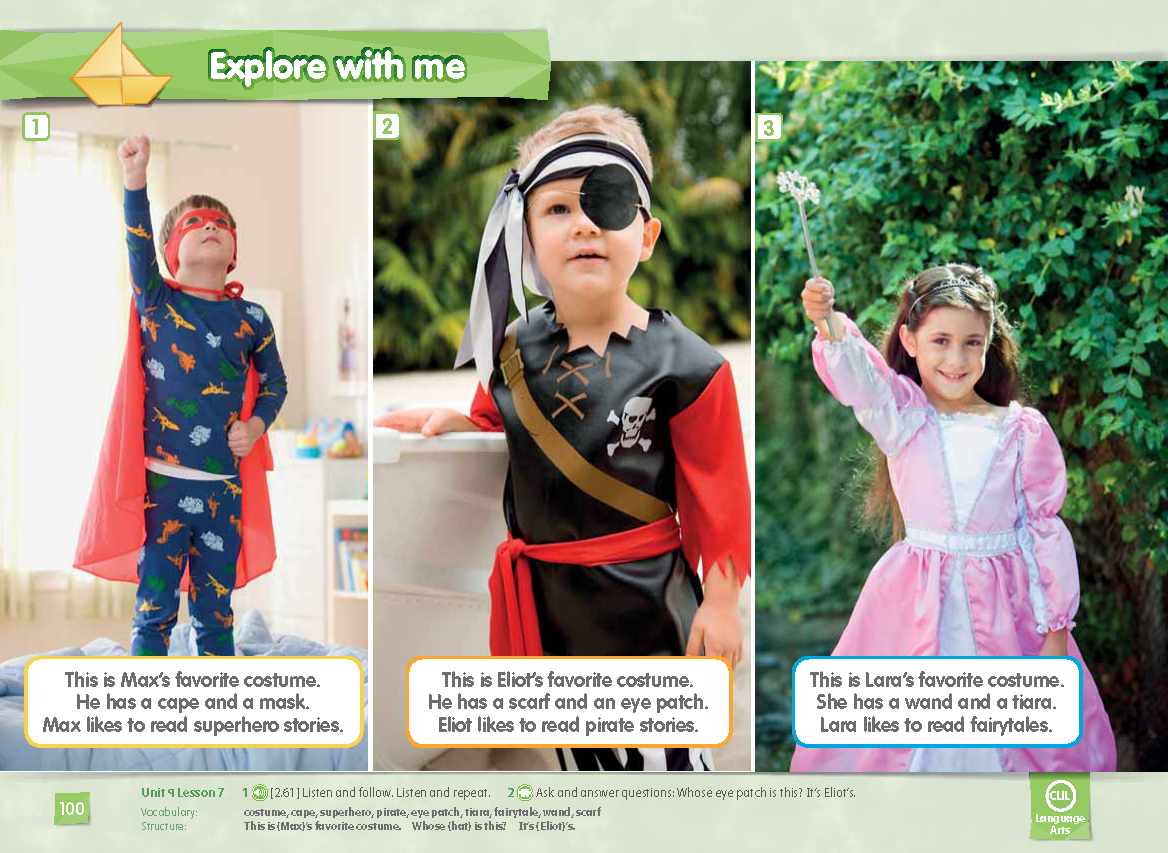
Social science
Focus on jobs, learning the names of different jobs and clothes and color vocabulary to talk about uniforms. Talk about what people in different jobs do and encourage children to role-play firefighters, doctors, police officers and so on – they won’t need much encouragement!
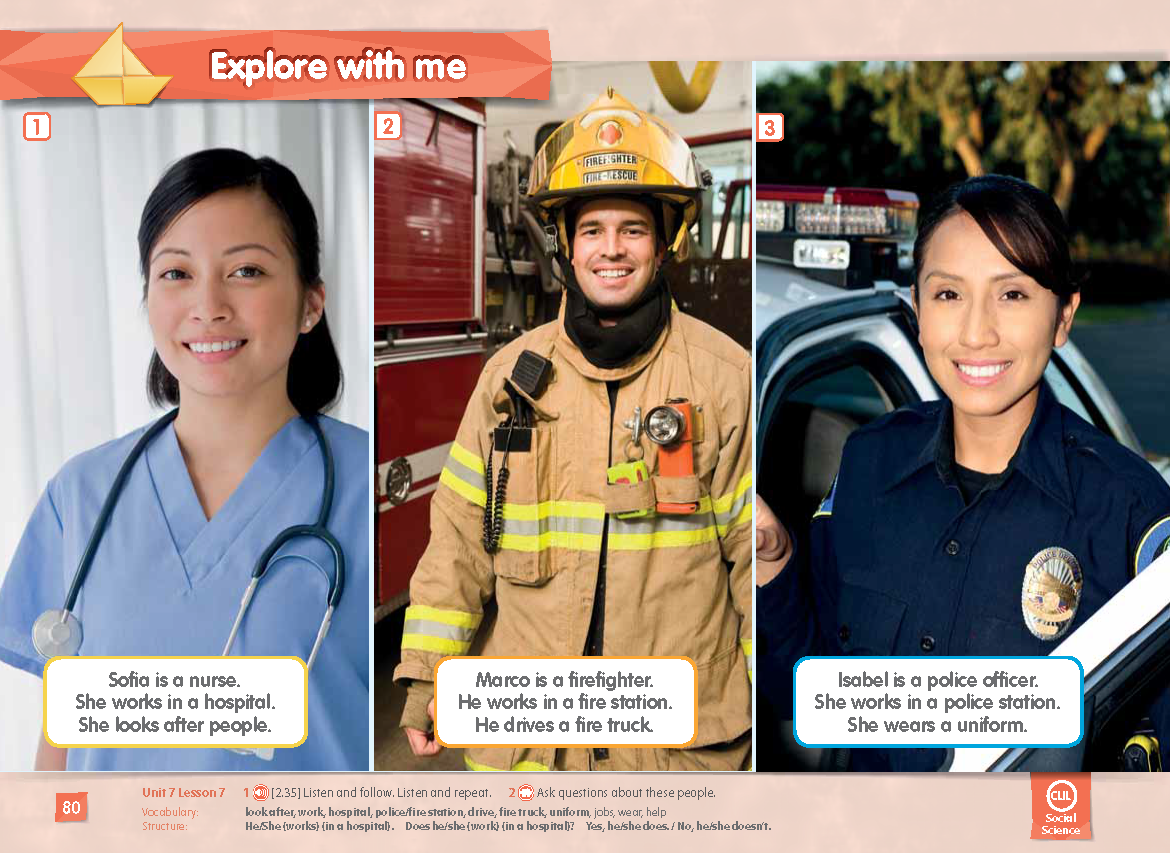
All these activities link with language areas that you might be teaching, but the role-play will also generate a need for more language that children will then practice in a memorable way through their play.
Hands on
Practical activities are key to keeping children of this age interested and motivated, and they can be used to explore all kinds of topic areas. Take a look at the free ‘sink or float?’ experiment activity. Here are a few more ideas.
| Subject focus | Language focus | Activity |
| Math: counting, simple addition and subtraction, finding one more or less | Number namesToys vocabularyHow many …? | Use toys (or other objects) to count in different scenarios, e.g. a teddy-bear picnic. |
| Music: learning a song, keeping the beatMath: counting backwards | Number names | Learn a simple counting song like ‘Five little monkeys’; use percussion instruments to keep the beat. |
| Science: learning about the senses | Food vocabularyIs it …?I like/don’t like… | Use taste and smell to identify food without being able to see it. |
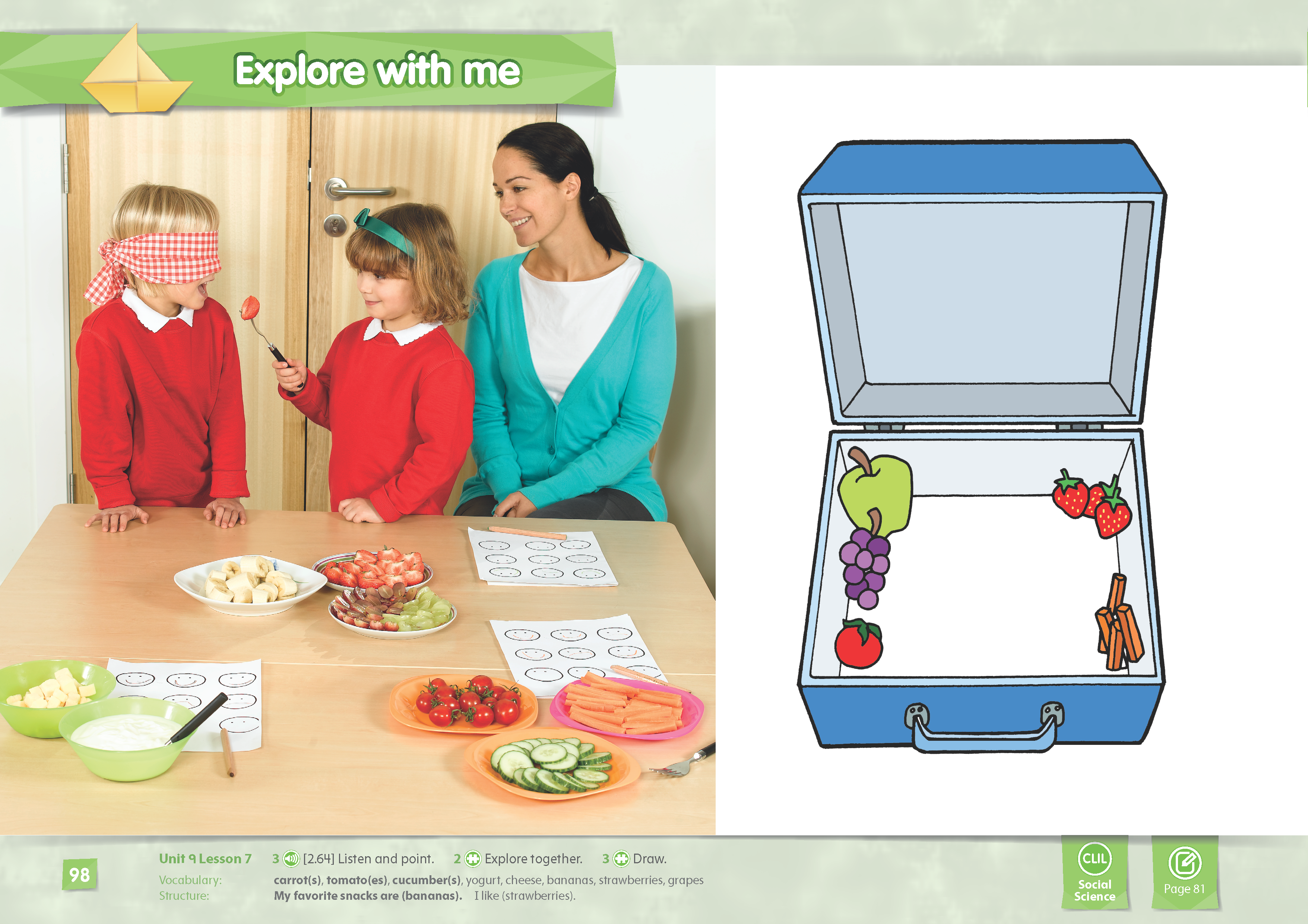
A table like this can be a useful tool for planning CLIL activities: whether you start with a subject area, a language objective or an activity that you already do that you want to exploit further, it can help you to consider the different elements together. Make sure that there is a natural fit between the language and the subject, and the activity will provide memorable, contextualized language practice. Consider the difficulty of each element, as well – if the language is tricky, maybe it would be better to use a subject area that children are familiar with; if the concepts are challenging, try to match it to language that the children already know.
I hope that, if you didn’t already, you’re now feeling that CLIL is an inspiring and achievable tool for kindergarten. Please post your experiences, and especially activities that have worked well for you, in the comments section below.
Would you like more practical tips on using CLIL and teaching 21st Century skills to your kindergarten children? Visit our site on Teaching 21st Century skills with confidence for free video tips, activity ideas and teaching tools.


[…] Photo courtesy of Jesse Milan via Flickr Margaret Whitfield, co-author of the new Kindergarten series, Show and Tell, offers some practical tips on making the most of CLIL in the Kindergarten classroom. […]
Reblogged this on M Amin Gental.
Reblogged this on Il Blog di Tino Soudaz 2.0 ( un pochino).
Reblogged this on hungarywolf.